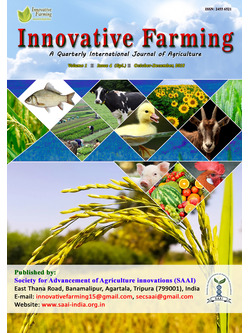
Honey Bees: A Model Insect in Horticultural Crop Production
Narayan Lal*
Dept. of Horticulture, College of Agriculture, Jawaharlal Nehru Krishi Vishwa Vidyalaya, Jabalpur, MP, INDIA
Nisha Sahu
Remote Sensing Application, National Bureau of Soil Survey & Land Use Planning, Nagpur, MH, INDIA
Jayshri Barcchiya
Dept. of Horticulture, College of Agriculture, Jawaharlal Nehru Krishi Vishwa Vidyalaya, Jabalpur, MP, INDIA
DOI: NIL
Keywords: Pollination, Production, Honey bee, Quality
Abstract
The focus of agriculture in India is slowly shifting from traditional system to high-value horticultural crops farming such as fruits and vegetables. The change of subsistence systems to commercial cultivation of horticultural crops possesses new challenges for improving crop productivity and quality. Amongst several factors attributing to low productivity, inadequate pollination is the most important. Pollination is a simple process involving transfer of pollen from anthers to the stigma of the same or different flower. Horticultural crops require adequate pollination for better fruit production. Most of the horticultural crops are cross pollinated and they need agent (honey bee) which could transfer pollen grain from one flower to another. Cross pollination of entomophilous crops by honeybees is considered as one of the effective and cheapest method for triggering the crop yield both qualitatively and quantitatively. It has been reported that there are more than 25000 described species of bees in the world and account for 65% pollination of various flowering crops. Primarily two honey bee species viz., Apis cerana indica and Apis mellifera have been successfully domesticated and practices for their management for pollination of crops have been standardized for many crops. Honey bee colony in the orchard must be ensured for better production.
Downloads
not found
